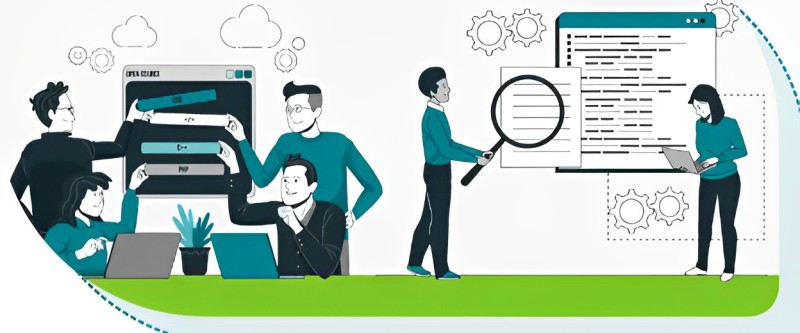Over the past decade, open-source software has radically transformed application development, fueling faster innovation cycles, easier collaboration between distributed teams, and substantial cost savings over proprietary solutions.
This open-source revolution has now reached the critical discipline of software testing as well, bringing tremendous opportunities as well as some unique challenges.
New cloud testing platforms built on open-source software development architectures allow organizations to validate web and mobile applications across virtually any browser, operating system, and device configuration a user might access them from.
By leveraging scalable, on-demand infrastructure available through public cloud providers rather than heavily capitalizing on test labs and emulators, these testing platforms minimize resource overhead while maximizing coverage.
In addition, community-driven shift open-source cloud testing frameworks simplify test automation to expand its reach beyond dedicated quality teams into the hands of developers and business users as well.
Transferring testing capabilities and visibility further empowers these stakeholders to play greater ownership in releasing high-quality digital experiences.
This blog explores the major benefits propelling the adoption of open-source cloud testing as well as best practices to leverage it effectively.

Democratizing Access to Comprehensive Testing
Proprietary testing tools and lab equipment have traditionally imposed significant cost barriers, limiting test automation potential for many organizations. Open-source options drastically reduce these constraints.
By leveraging cloud infrastructure instead of managing internal labs, teams minimize demands around capital expenditures, equipment maintenance, and lab administration overheads.
Avoiding large upfront investments unlocks flexibility, allowing initiatives to ramp test coverage up or down as needs evolve. Likewise, open-source testing platforms eliminate software licensing costs.
The community-driven model centers on building shared testware assets that all can build upon rather than proprietary IP. Avoiding per-seat or consumption-based licensing unshackles test capacity expansion.
Combined with highly scalable cloud computing and storage layers with usage-based billing, these testing solutions offer advantageous total cost of ownership compared to legacy testing platforms and toolchains. Testing initiatives can scale broadly across the portfolio at a fraction of what organizations may invest today.
Accelerating Release Velocity
Obstacles in testing commonly hinder application release cycles. Lengthy test runs stall development workflows while test creation lags inhibit test activity expansion.
By simplifying and parallelizing testing, open-source cloud testing solutions help compress delivery timelines to support modern release velocities.
Test automation frameworks streamline test coding efforts so both expert testers and citizens across the delivery lifecycle write automated checks faster. What could take days manually reduced to minutes using codeless or low-code approaches. Replacing complex scripting lowers skill barriers so cross-functional delivery teams augment test coverage.
Running tests concurrently across thousands of browsers and devices in the cloud also hastens execution. Scripts process in minutes instead of the hours or days they might take running sequentially in traditional lab environments. Faster feedback triggers faster fixes to keep projects moving. Continuous testing integrations further enable test early, test often processes.
Automated checks run on every code change to deliver instant feedback. Tests also auto-heal from flaky failures to safeguard existing coverage. Frictionless pipelines let teams release incremental updates hourly or daily with validated browser compatibility.
Strengthening Feedback Loops
Developers receive sharper signals on how code changes impact end-user experiences by granting testing access to more delivery stakeholders.
Test reports, visual logs, and analytics from open-source testing solutions provide straightforward yet comprehensive visibility.
With cloud-based self-service testing, product managers validate stories match requirements before development begins.
Designers confirm styles and responsiveness across viewports. Developers run basic checks before committing code. Dedicated testers focus on deeper scenario-based testing.
Embedding testing practices across personas close visibility gaps that previously obstructed defects from surfacing until final quality assurance. Finding issues earlier in delivery lifecycles proves exponentially cheaper and faster to fix than fixing them in production.
Fostering distributed testing and visibility ownership further enables teams to support the testing activity volumes required to keep pace with continuous delivery expectations. Scaling open-source automated checks amplifies oversight in the end-user experience.
Accelerating Innovation through Collaboration
Transparency unlocks faster evolution cycles. Public repositories allow adopters to easily build upon existing test modules from the community.
Sharing test artifacts also avoids duplicating effort and reinventing assets internally. Teams construct better tests faster by learning from the crowd. Common test platforms similarly establish consistency in test data schemas, reporting, integrations, and extensibility patterns.
Standardization helps focus more time on validating business requirements than testing toolchains and infrastructure. Aligned approaches also simplify adding testing expertise across distributed groups.
Vibrant communities behind popular open-source testing projects also introduce teams to better ideas and emerging capabilities quicker through events, blogs, documentation, and support channels. Connecting solves issues and moves solutions forward collectively.
Maximizing the Value of Open-Source Cloud Testing
The following guide shares best practices to optimize open-source testing results and total cost of ownership.
Evaluate Tool Capabilities
Hundreds of test automation frameworks now flood the market, from general-purpose regression test runners to specialized tools for API testing services, performance validation, accessibility conformance, and more.
Assess open-source tool functionalities against current and future testing needs across the quality maturity model to confirm fit. Balancing extensive functionality availability with usability prevents overcomplicating efforts while still enabling growth.
Confirm documentation and community activity support learning curves as well. Trying before buying still holds merits in the open-source domain given fast-changing dynamics.
Model Total Costs Realistically
Calculate true expenditures beyond just subscription fees when projecting costs.
Consider test environment hosting charges in public clouds, additional storage needs for visual logs and videos, load testing capacity, CI/CD pipeline resource overhead, maintenance effort, and so on—model against multiple volume scenarios from current to projected future throughput.
Double-check assumptions on test parallelization potential and execution times as well based on use case complexity.
While open-source testing proves significantly cheaper than legacy licensing models, precise cost modeling helps secure an appropriate budget.
Plan Transition Strategies
Define a transition roadmap phasing from current to future state testing platforms to balance priorities, pace change appropriately, and demonstrate outcomes incrementally. Prioritize automation for repetitive and time-consuming validations first.
Sustaining existing critical coverage while expanding new capabilities prevents gaps in oversight. Leverage conversion utilities to accelerate rebuilt test assets where feasible.
Allocate Dedicated Setup Time
The out-of-the-box simplicity of open-source testing solutions still necessitates initial configuration and customization efforts. Configuring tests, repositories, permissions, integrations, reporting dashboards and more takes focus. Creating an organized structure early allows seamless scale over time.
Have technical teams block setup time on their calendars to avoid deprioritizing or prolonging provisioning. Dedicating contiguous hours accelerates setup over fragmented efforts stretched across weeks. Appoint dedicated owners overseeing infrastructure, integrations, and administration too.
Democratize Carefully
Expanding access to open source testing capabilities across an organization most effectively occurs incrementally versus opening the floodgates instantly.
Define structured programs around citizen testers with learning resources, available tools, documentation templates, code review, and assistance developing and maintaining tests. Seed programs with key business subject matter experts and power users first to validate effectiveness before scaling further. Controlled growth allows ops teams to adapt to added test volumes. Feature flags also facilitate targeted early access.
Keep Tools Updated
Consistently upgrade open-source testing frameworks and cloud provider plugins to leverage the latest capabilities, defect fixes, and performance gains across the rapid release cycles common in these communities. However, balance integration benefits with available upgrade bandwidth.
Define regular but sustainable tooling upgrade cycles, like upgrading twice annually rather than chasing every single weekly release. Perform updates during periods of lower release activity and reserve buffers post-upgrade for root-causing unanticipated breaks.
Foster Engagement
Driving developer happiness and productivity with testing tools directly correlates with adoption and testing culture. Beyond knowledge sharing and docs, create transparency into testing efficacy, highlight successes, offer incentives based on contribution levels, and celebrate wins to motivate engagement.
Developer experience drastically impacts utilization. Optimize local runtimes, IDE plugins, sandbox testing environments, and feedback visibility to remove tester friction. Celebrate contributions publicly while offering frameless options for those less inclined towards the spotlight.
By reducing the barriers that traditionally confined test automation success to just dedicated experts, testing reaches across personas, stages and use cases to prevent defects rather than merely detect them farther downstream.
Read More:



